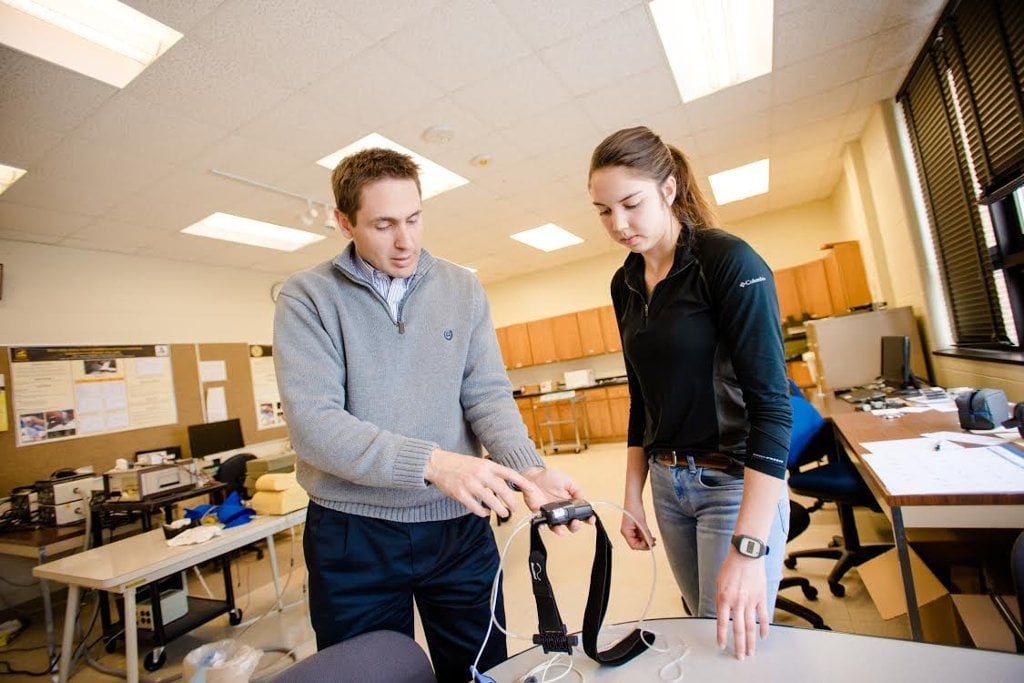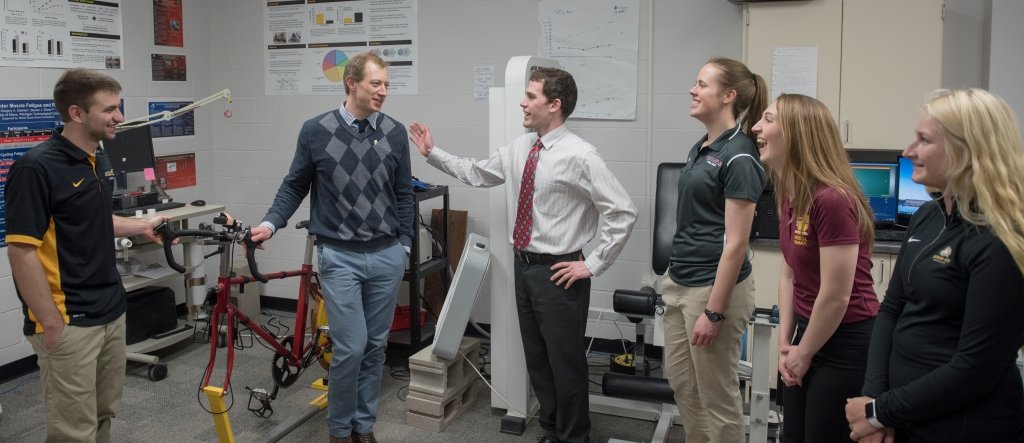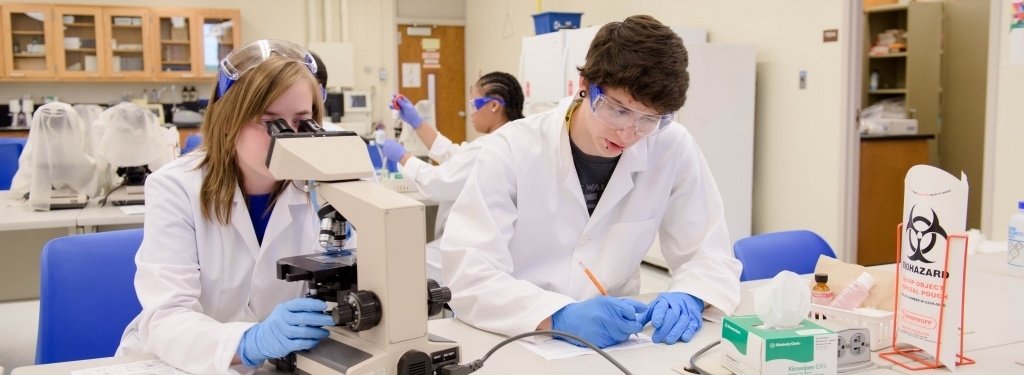In Steve Elmer's lab, researchers explore the limits of the human body in a quest to make people move—and feel—better. Elmer's team designs cutting edge equipment and training regimes to help every body reach its highest potential, regardless of age, profession, or ability.
The benefits of strength training are many and well known: Strength training helps you maintain a healthy weight. It protects your bones and preserves your muscle mass. It helps develop better body mechanics, boosts your energy, and improves your mood. It even plays a role in disease prevention and pain management.
In fact, strength training is so beneficial that the American College of Sports Medicine (ACSM) recommends adults engage in a strength-training program a minimum of two non-consecutive days each week. And their recommendations don't stop there—ACSM outlines specific types of strength-building exercises and target numbers for repetition.
So everyone should be strength training, right?
While it's easy to say everyone should, not everyone can, at least not in a "traditional" manner.
Take, for instance, someone who uses a wheelchair or someone who has recently undergone knee surgery. Finding effective lower-body strength-training exercises that don't overtax the heart, lungs, and joints can be a challenge. And many with old injuries run into the same problem.
Michigan Tech researchers have found a solution. Steve Elmer is an assistant professor of kinesiology and integrative physiology, an affiliated assistant professor of biological sciences, and an affiliated assistant professor of mechanical engineering. His lab is interdisciplinary, where students, participants, and researchers explore the edges of physiology.
Restriction Training

PhD student Matt Kilgas studies the impact of restricted blood flow on muscle strength and size. Study participants lift light weights with a blood pressure cuff around the working muscle; the cuff is tightened just so, making sure enough blood is coming in, but not all is going back out.
Preliminary data shows that restricting the blood flow this way increases the size and strength of the muscle—helping to restore balance between limbs—even though the exerciser is only lifting light weights.
"This research has excellent applications," Elmer says. "Not only can it be used for rehabilitation, it can also be used by older adults, athletes, anyone who wants to get stronger."
Kilgas' research is also unique in that it can be done at home with a rubber exercise band: "If you lift 40 pounds with equipment at the gym," Elmer explains, "you can lift five or 10 pounds at home while using the rubber band, and it feels like 40 pounds. It has the same impact as 40."
Kilgas' research was partially funded by the Blue Cross Blue Shield Foundation, which provides PhD candidates with up to $3,000 for research aimed at improving the health of Michigan residents. Kilgas also received a student grant from the Michigan Space Grant Consortium—his research may have important implications for astronauts, whose muscles atrophy quickly in space and have to exercise many hours a day to prevent muscle loss.
Accessible and Adjustable
Regular exercise is important for maintaining health, especially for wheelchair users. However, wheelchair-friendly exercise equipment is not always readily accessible, adjustable, or effective.
For the past two years, Elmer has led a team of mechanical engineering, kinesiology, and physical therapy students who collaborated to develop new exercise equipment for wheelchair users—bridging the gap between engineering and rehabilitation.
Elmer's research equipment and graduate students were funded in part through the Portage Health Foundation. The infrastructure grant helps improve research facilities and the assistantships recognize outstanding doctoral students promoting the wellness of Houghton, Keweenaw, Baraga, and Ontonagon communities.
With funding from the ACSM, Elmer's team brought 10 wheelchair users to campus to use the specially designed exercise equipment and measure how it impacts upper body muscles. The equipment uses a specialized motor-driven arm cycle to provide a high-intensity workout for upper body muscles, without overtaxing the heart and lungs.
Wheelchair users can do this type of exercise regardless of their fitness level to help strengthen their upper body muscles. Having increased strength and fitness can help individuals be more independent and ultimately have better quality of life. With additional funding from the National Science Foundation, Elmer, Kilgas, and Michael Morley, Michigan Tech's director of technology commercialization, teamed up to look at the commercial needs. The three talked to more than 100 people—including clinicians, wheelchair users, and equipment manufacturers—to determine what the needs are for wheelchair equipment and how Michigan Tech can adapt technology to fit that need.
Marathon Minutes
Can a human run a marathon in under two hours? In May 2017, all eyes were on Milan, Italy, as three of the world's best marathon runners set out to answer that question. When runner Eliud Kipchoge crossed the finish line, we knew this much: We're not there yet, but we've only got 25 seconds to go.

Preliminary data shows that restricting blood flow with a blood pressure cuff increases a muscle's size and strength, even though the exerciser is only lifting light weights.
Kipchoge ran the marathon in 2:00:25, setting a world record and shaving two and a half minutes off the previous record in the process. But long before Kipchoge and fellow runners Lelisa Dedisa and Zersenay Tadese had laced up their Nikes (the athletic apparel giant sponsored the experiment, known as Breaking2), Michigan Tech students had been grappling with the two-hour marathon question. During the past few semesters, they got help from Mayo Clinic physician researcher Mike Joyner, a world-renowned expert on human performance and exercise physiology. Joyner was one of the expert consultants on Breaking2.
Exercise physiology undergraduate and graduate students set out to build the ideal runner and present their ideas to Joyner. When their projects—and runners—were complete, the undergraduates met with him as a class via Skype. The graduate students participated in a small-group workshop with Joyner and received feedback from him in March 2017. When Kipchoge, Dedisa, and Tadese ran Nike's Breaking2 race two months later, the graduate students received real-world confirmation that much of what they predicted was true.
Elmer, Joyner, and Jason Carter, chair of the KIP department, worked together to debrief how the mental exercise worked in the classroom. They have written a paper on the subject, published in Advances in Physiology Education last summer.
"This is a great example of the problem-based learning we do here in KIP," Elmer says. "We then build upon that research so it becomes discovery-based learning."
Michigan Technological University is an R1 public research university founded in 1885 in Houghton, and is home to nearly 7,500 students from more than 60 countries around the world. Consistently ranked among the best universities in the country for return on investment, Michigan's flagship technological university offers more than 120 undergraduate and graduate degree programs in science and technology, engineering, computing, forestry, business, health professions, humanities, mathematics, social sciences, and the arts. The rural campus is situated just miles from Lake Superior in Michigan's Upper Peninsula, offering year-round opportunities for outdoor adventure.




